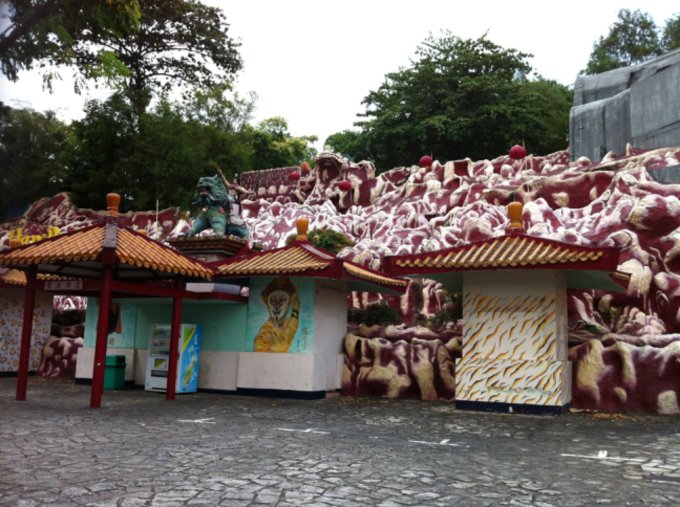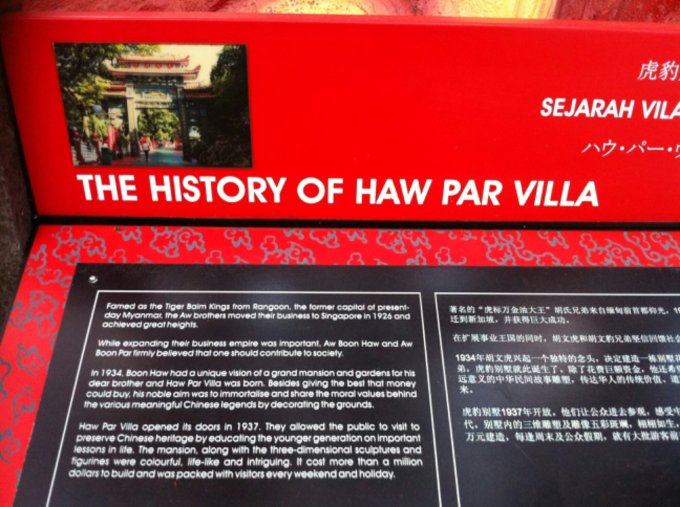As promised, here’s the story for another time.
One morning, I got talking to a guy who’d been in Singapore for two weeks. I asked him what he’d enjoyed most and what he’d recommend. Reeling off the usual guidebook attractions, I noted them down and circled my map. Just as I was going to clear my breakfast dishes, he said:
“Oh, and my favourite thing I did, was go to Haw Par Villa. It’s this place full of Chinese statues. I won’t say anymore, just go there. Trust me. It’s bizarre and brilliant.”
So I did. But not before having a sneak peak at the Lonely Planet guide to see if there was anymore information. The answer was, no, not really:
‘That which is derived from society should be returned to society’, said Aw Boon Haw, creator of the Tiger Balm miracle salve. A million dollars later, what he returned was the Haw Par Villa, an unbelievably weird and undoubtedly kitsch theme park showcasing Chinese culture.
Knowing that it was about the people who developed Tiger Balm, but not much else, I hopped on the metro and headed for the conveniently named station, ‘Haw Par Villa’. When I got off the line, I wandered into the street, expecting to find a map with a big YOU ARE HERE red dot, but who needs a map when you can just turn right and you come across this:
I walked up to the main gate where I was met by a man. It was very quite and I couldn’t see any tourists. This is often a bad sign in SEA.
“One hour,” he said. “We close.”
Crap. I’d left it too late and so I had to rush. I smiled and said thank you before continuing up the slope towards the attraction. When I rounded the corner, I found a signpost and a map. This place is big. With my camera around my neck, I decided to take a picture of everything as I knew I wouldn’t be coming back here. Not for a long time anyway.
Walking around, I thought I’d be able to gain some information from the abundance of plaques and signs dotted around the area, but most of them were a metallic gold, chipped and most of the writing was worn away. This was much the same story for the statues themselves. What were once colourful depictions of Chinese myth and legend, were now fading bridges and beasts, weathered and crumbling.
A clichéd splash of paint would have actually brought these statues back to life, but somehow, they seemed better this way. I’m sure back in 1937 when the Villa and it’s grounds were opened, the bright colours and clear, blue water features would have attracted visitors from all over. In fact, an article on the way out proved this to be true. But I felt as though this dilapidated park had an abundance stories whispering through the tunnels and over the bridges of chipped plaster and paint.
Did I mention it was deserted? Not only were there no tourists, but there were no staff either. I had the lonely place to myself. It was brilliant. I wandered around in the silent world of tigers, fish, people, and myth. It was a blissful hour.
Although run-down, I felt this place deserved a post. It was my favourite spot in Singapore. It felt unloved and unattended for, but this is what gave it charm and illusion – exactly what Haw Par Villa is supposed to represent.


